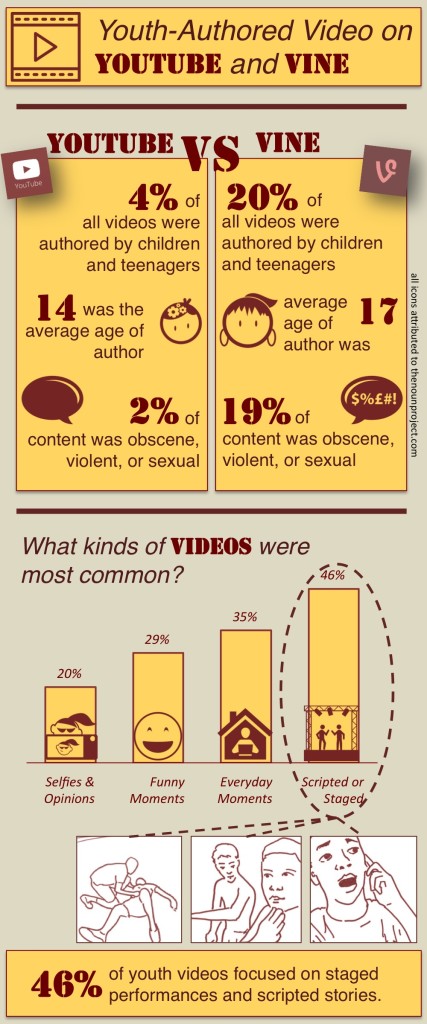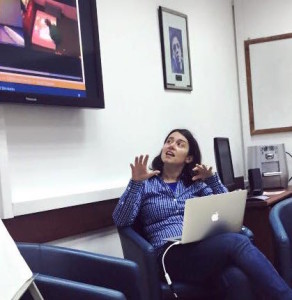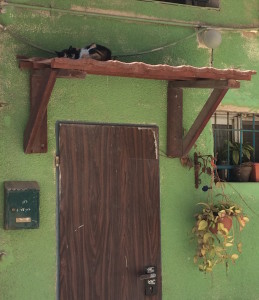
We looked at more than 300 videos posted by children and teenagers on YouTube and Vine and discovered some interesting facts about youth video authorship.
It’s 2015, do you know what your kids are posting online? Children and teenagers use public video platforms like YouTube and Vine to share their stories. Knowing more about what and how they share could help us design tools that encourage creativity and self-expression while helping young people reflect on online safety and privacy. To find out more about what youth video authors do online, we conducted a study that looked at over 300 recently-shared youth authored videos.
We used human computation (see paper for details) to identify 336 youth-authored videos out of 4000 videos recently publicly shared on YouTube and Vine. We found interesting differences between YouTube and Vine and interesting contrasts between what youths and adults share:
- YouTube vs. Vine. We found that the YouTube creators were on average younger (14 years old) than Vine creators (17 years old). YouTube creators more likely to collaborate with adults on the videos, and much less likely to include content that was violent, sexual, or obscene in nature. It seems that YouTube is a family space, while Vine is a playground for older teens. However, we should not be alarmist about Vine or try to keep teenagers away from it. We know that it’s important for teenagers to take risks and experiment with their identities as a way of developing resilience. Perhaps, a better focus would be creating tools to help them reflect on their online persona and better understand how their videos are viewed and shared by others.
- Youths vs. Adults. A previous study of online video authorship identified the most common types of videos posted by adults. Adults reported being most likely to post videos of friends and family doing everyday things, videos of themselves or others doing funny things, videos of an event they attended, and videos of pets or animals. In a nutshell, it can be said that they treat video as an archive to collect and keep precious memories of everyday life with their family, friends, and pets, humorous moments, and special events. In contrast, we found that the most common types of videos posted by children and teenagers were intentionally staged, scripted, or choreographed videos, videos of friends and family doing everyday things, videos of themselves or others doing funny things, and video selfies and opinions. In short, children and teenagers are more likely to treat video as a stage to tell their stories and show their talents. Knowing this, we can design systems that support young authors not in capturing and archiving, but in planning, performing, and editing compelling narratives and performances.
If you want more details about our methods, findings, and examples of videos we found, check out our paper that has been accepted to appear in the Proceedings of CSCW 2016: Svetlana Yarosh, Elizabeth Bonsignore, Sarah McRoberts, and Tamara Peyton. 2016. YouthTube: Youth Video Authorship on YouTube and Vine. Proceedings of the 2016 conference on Computer supported cooperative work, ACM.




























